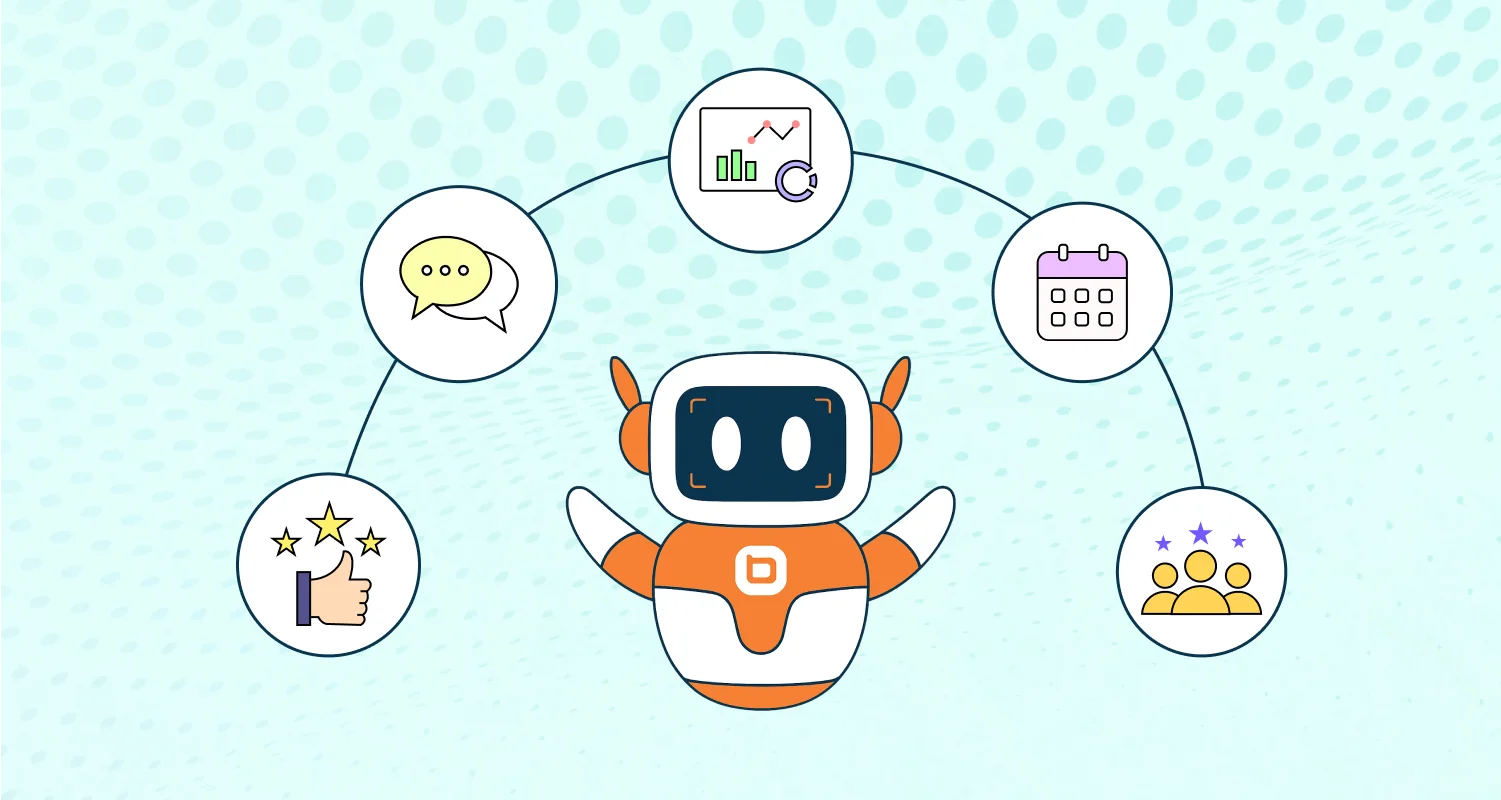A challenge businesses face is in knowing how both to handle all their customers’ support issues and maintain an outstanding experience.
This calls for support managers and leads to create and implement successful customer service management (CSM) strategies to ensure every interaction from presale to post-purchase is positive and streamlined.
So, how can businesses strategically plan customer service management to achieve the best results?
In this blog, we define customer service management, examine its significance, review tools available for it, and offer ideas on how to use them successfully.
What is customer service management?
Customer service management refers to the processes or techniques that are used to ensure the support teams effectively handle customer issues.
It covers every interaction a business has with customers, such as responding to inquiries, providing product support, processing orders, and offering after-sales services.
The goal is to create positive experiences and improve customer relations, which will make customers happy, retain customers, and increase revenue.
Key principles of customer service management
Customer support management principles guide organizations in delivering exceptional service and fostering positive customer relationships.
Here are six commonly recognized initial principles:
- Speed: Automate customer service for quicker responses to inquiries and complaints.
- Knowledge: Support teams are the face of your company post-purchase. They should be knowledgeable about products, features, pricing, and policies to provide smooth assistance.
- Accuracy: Your team should be well-trained to deliver quick, error-free, and quality support.
- Understanding: Empathy in customer service means support teams know how to express understanding for customers’ concerns and frustrations.
- Consistency: Customers should receive the same high level of support across all communication channels and touchpoints.
Roles of customer service manager
A customer service manager supervises a team of representatives, ensuring they deliver quality service and achieve performance objectives:
- Manage the support team: Ensure that the right employees are hired, mentored, and trained to handle all support issues effectively.
- Develop customer service policies: Create guidelines for consistent customer service across communication channels such as email, mobile apps, and live chat.
- Review customer feedback and performance metrics: Monitor customer feedback and metrics such as satisfaction ratings, response times, and resolution times. Use help desk reports to find areas for improvement and implement changes.
- Organize collaboration with other teams: Integrate collaboration tools into their customer service system to ensure their team members easily cooperate with other departments, such as marketing and product development teams.
How to improve customer support management
Improving customer service management requires implementing key strategies and practices to ensure customers receive high-quality support.
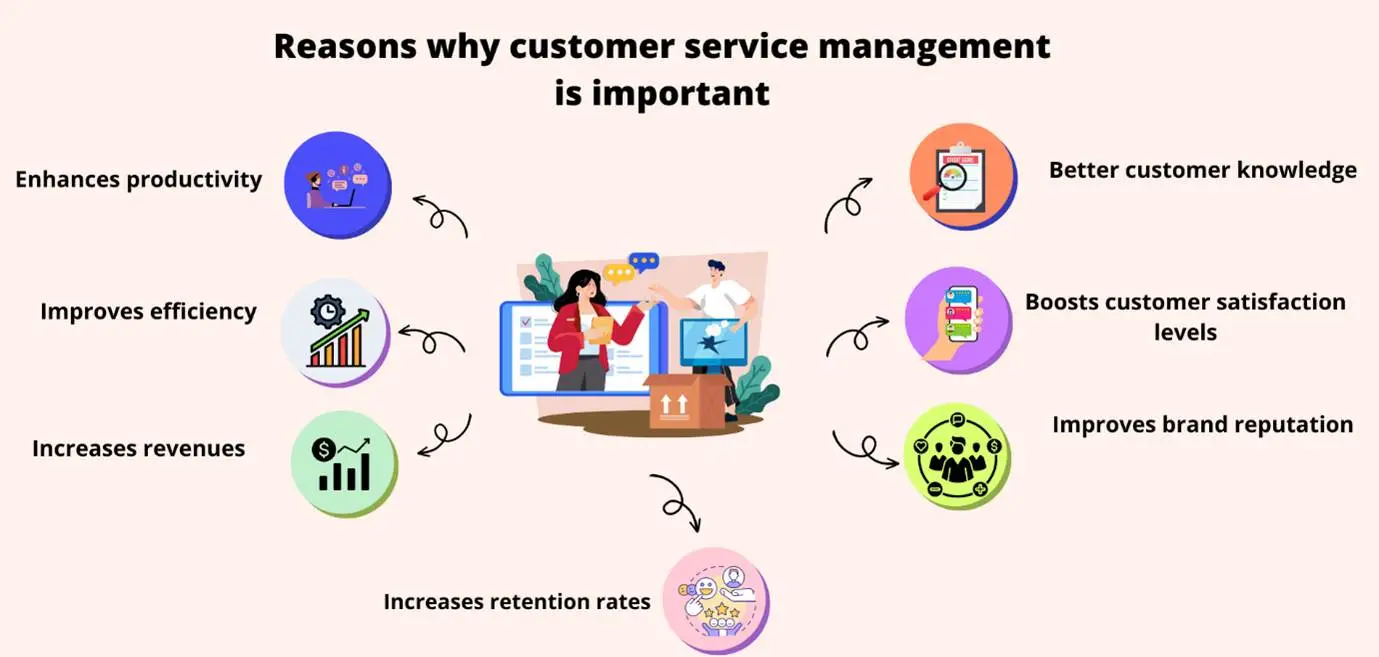
Establish clear objectives
Specify what you want to achieve with your customer service. Ensure your customer service goals support the overall business strategy.
Some examples of these goals can include:
- Increasing customer satisfaction
- Reducing response time
- Improving first-contact resolution rate
Once these objectives are set, communicate them to your support team to ensure everyone is working towards the same vision.
Empower your customer support teams
Provide support teams with comprehensive training for product knowledge, communication skills, problem-solving techniques, tool optimization, and conflict resolution.
This enables them to handle customers’ issues independently, resulting in quicker solutions.
Use technology to enhance customer service
Having the right customer service software streamlines your customer support operations.
These tools automate routine tasks and free up agents for more complex issues. Invest in customer service tools such as:
- Live chat software: Offers real-time and automated interactions, helping customers get quick resolutions to their support issues.
- A knowledge base software: Provides customers with self-help resources like FAQs and troubleshooting guides to help minimize the need for direct contact with the support teams.
- Help desk ticketing system: Empowers customer service teams to track and manage all customer inquiries efficiently in a centralized hub.
- Artificial intelligence (AI): The integrated AI Copilot tools assist agents in generating helpful information and personalized responses to resolve issues, summarize tickets, analyze customer sentiment, and more.
- Workflow automation: Enables automatic creation and routing of support tickets to appropriate agents. Automated help desk can also be used to perform manual and repetitive tasks automatically to improve agent productivity.
Personalize customer interactions
Make use of customer preferences to tailor interactions and provide personalized recommendations.
You can also customize responses to customers to have a personal touch and address specific issues. This will make customers feel valued and understood, significantly enhancing their experience.
Additionally, consider providing agents with controlled access and permission to customer data such as conversation history and contact information.
Empower them with a contact management tool, which enables agents to manage, monitor, and segment customer interactions and provide better customer support.
Provide quick responses through multiple channels
Offer comprehensive omnichannel support through various customer communication channels such as email, live chat, and social media platforms.
Customers can reach out for support through their preferred channel at every stage of their journey.
Draft clear service-level agreement targets to establish response and resolution time goals for each support channel.
This ensures that customers receive timely assistance, regardless of the platform they use, preventing escalations.
Recognize and reward your employees
Acknowledge and celebrate employee achievements and contributions regularly. Consider offering incentives, bonuses, or other rewards to recognize exceptional performance.
Recognizing and rewarding employees for their hard work can boost morale and motivation, leading to greater success for the team and the organization.
Offer proactive customer engagement
Offer step-by-step guides, valuable knowledge bases, how-to videos, and information to help customers solve problems independently.
You can also proactively manage customer service by:
- Identifying potential issues before they occur
- Reaching out with updates and recommendations
- Resolving minor problems before they escalate
Implement customer feedback loop
Collect customer feedback regularly through surveys, reviews on social media platforms, and other mediums.
Analyze the information to identify areas for improvement in your support operations.
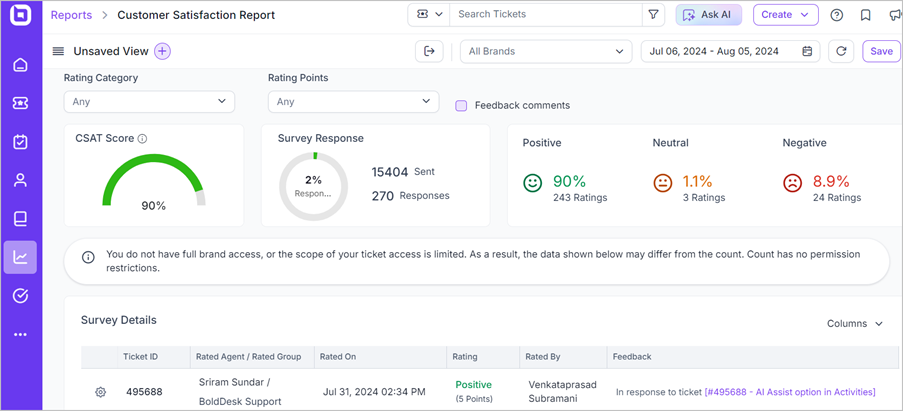
Additionally, encourage employees to share insights and suggestions about customer interactions for better customer support management.
Regularly monitor support teams’ performance
Frequently monitor and analyze customer experience metrics. This means metrics like customer satisfaction, average handle time, and first-contact resolution rates.
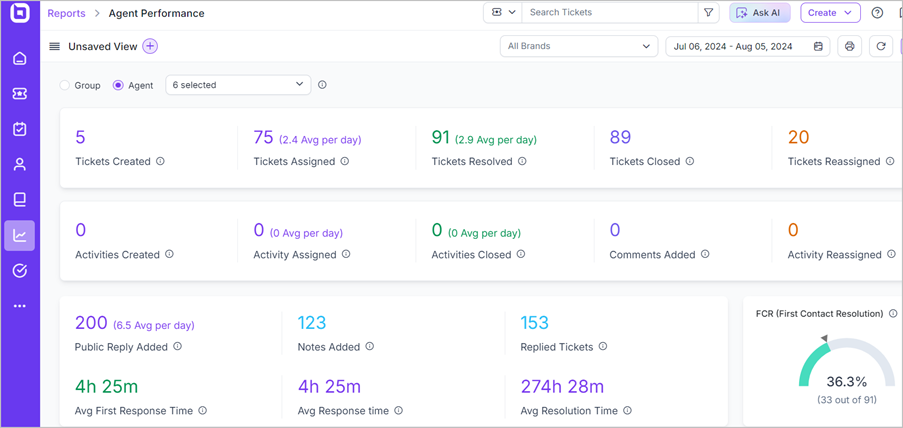
According to Statista report, 82% of customer state that they would only recommend a business based on exceptional customer service.
To meet this expectation, conduct regular agent performance reviews to provide feedback and identify training customer needs.
Offering frequently coaching and support can help employees improve their skills and deliver better service.
Benefits of customer service management
A customer service management strategy that follows common principles can provide numerous advantages to a business.
When businesses provide their support teams with the right resources and skills, they set the agents on the right path to handling all customer service operations smoothly.
With effective customer support management strategies, support agents are empowered to resolve issues more quickly and provide exceptional customer support.

What are some examples of great customer service management?
The following are a few examples that illustrate exceptional customer service management’s great effect on the overall customer experience.
Ritz-Carlton
Ritz-Carlton’s success lies in personalized customer service that align with each guest’s preferences.
This is achieved through customer profiles, attentive service, and welcome rituals. Every employee, from housekeeping to management, is trained to prioritize customer satisfaction.
Reverb
Reverb, an online musical instrument store, helps musicians acquire gear for iconic sounds.
Its customer engagement team is one-quarter of the business. When they revamped their customer support management strategy, they created self-service features like articles and FAQs to let customers find answers to their questions on their own.
Try BoldDesk for excellent customer service management
For any customer experience to be outstanding at all touchpoints, businesses must manage their customer support operations with effective strategies and the right help desk ticketing system.
Consider using customer support management software like BoldDesk, which has powerful features such as an integrated workspace, intelligent ticket routing, reporting, and knowledge base software.
Start with a free trial or arrange a live demo to explore BoldDesk’s many features.
For more information about the product and its capabilities, please contact the BoldDesk support team.
Was this blog helpful to you? Do you have any suggestions you would like us to add? Provide your thoughts in the comments section below.
Frequently Asked Question (FAQ)
What is the customer service management process?
- Customer support strategy development: Set clear standards and goals for the customer service team to help them identify what they are aiming to achieve.
- Customer support system and tools: Equip employees with the right tools and technology for effective support. Ensure the team has access to the necessary resources.
- Measure performance: Track KPIs such as response times, first-contact resolution, customer satisfaction, and Net promoter score to help identify areas for improvement.
Related articles
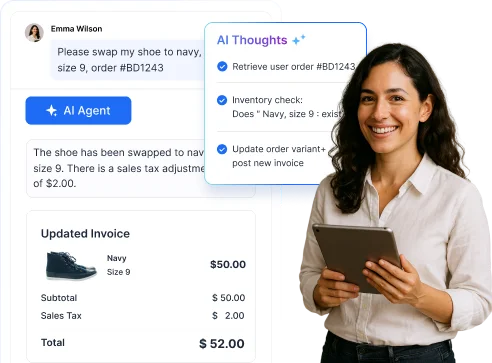


















 Email Ticketing System
Email Ticketing System Shared Inbox Software
Shared Inbox Software Multi Brand Help Desk
Multi Brand Help Desk Internal Help Desk Software
Internal Help Desk Software Trouble Ticketing Software
Trouble Ticketing Software Mobile Help Desk
Mobile Help Desk 










